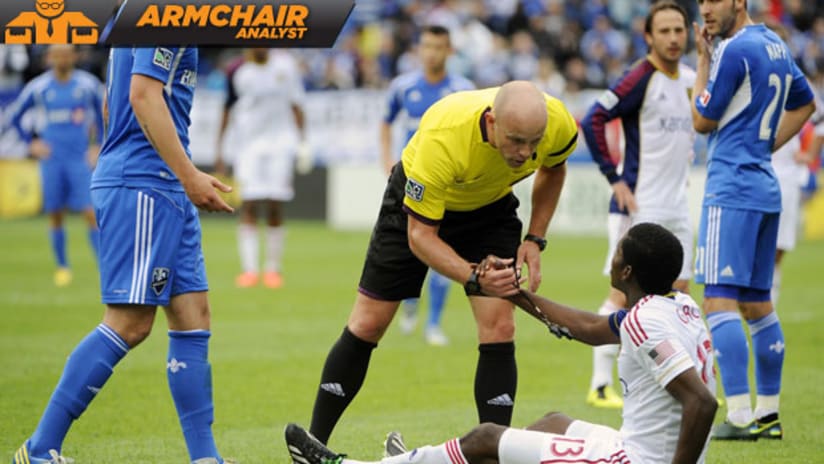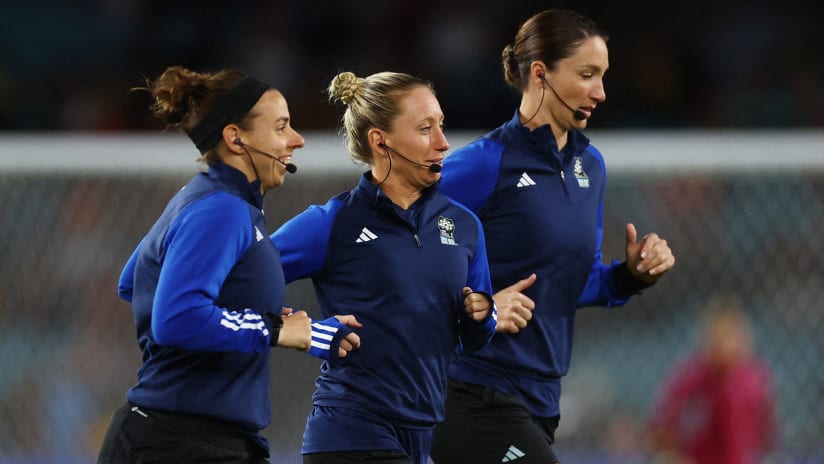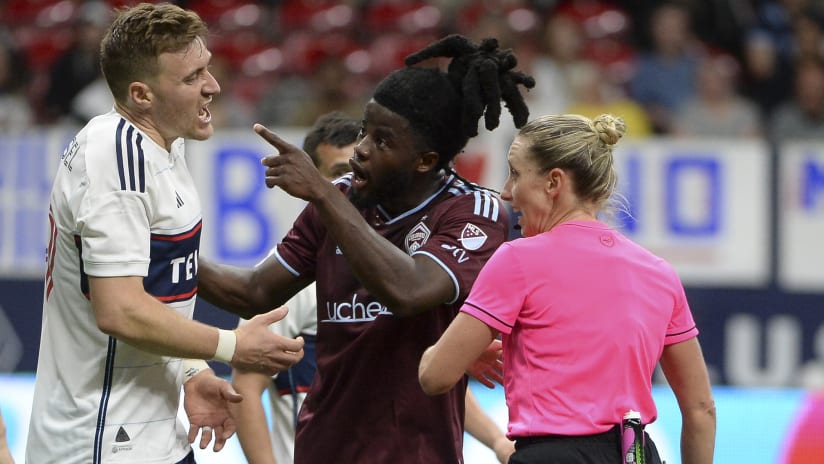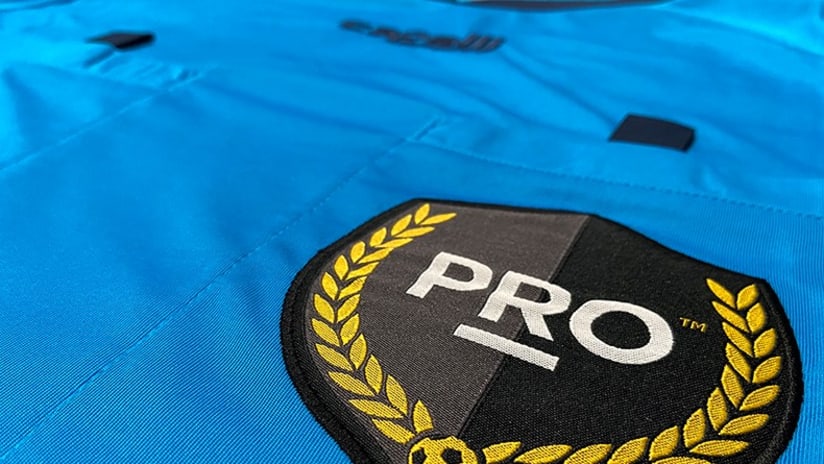There can’t possibly be a lonelier job than that of the head referee. There you are, out in the middle of a field, in the middle of a stadium filled with screaming fans, with every decision you make during the most important part of your day job broadcast on live TV. You are the one person out there that nobody roots for.
To me, that sounds like a nightmare. The last thing anybody sane would want – in my eyes, anyway – is to be in the no-win situation refs put themselves willingly into every single week.
But that’s what they do. It’s a thankless job, and a hard job, and I (like most of you, I’m sure) have a few ideas as to how to make the guys who do it better.
So I ran a few of them past Peter Walton, head of the Professional Referees Organization (PRO). Some he liked. Some he didn’t. Here’s my take, and his:
1. Add a second center ref
From my vantage point, this is the easiest fix there is. Soccer is 22 world-class athletes and a ball that’s faster than any of them, running up and down a field that’s, at minimum, 7,500 square yards. Step back for a minute, really look at those numbers, and it seems slightly insane that we ask one person to take on all that responsibility.
Would you approve of a FIFA mandate to add a second center ref?
There’s precedent here: The NHL added a second head ref late in the 1998-99 season. The following year, scoring went up while fighting and penalty minutes went down. And of course, the NBA (and FIBA) uses three refs, with tough calls generally made by whichever one has the best position.
Walton was lukewarm. Here’s his take:
“I’m not against that, but what I would say is that we have a whole host of people inside and outside the game frantically trying to get consistency within the game, and here you are, you’re going to introduce another inconsistency in the game by introducing two guys thinking different ideas,” he explained. “When the laws are so very subjective, you’re looking to introduce another risk in terms of consistency in the game.”
We went back and forth on that one for a bit, and he made it clear that this is something he would be happy to see tried at lower levels. But he was adamant that refs would need to be brought up on that system, trained for it, if it was to work properly.
“The jury is out as far as its worth, as far as I’m concerned," he said. "But I’m not suggesting we shouldn’t do it.”
I’m still suggesting we should.
2. Goal-line technology
The league has made it clear that it’s a cost/benefit issue. You could go half a year without goal-line tech playing a role, or you could need it three times in a week.
This happened to be one of those “three times” weeks. New York’s Eric Alexander rang the crossbar against Montreal midweek, and it looked – to me, anyway – like the ball crossed the line before backspin kicked it back out into the field of play. Luckily for the Red Bulls, Fabián Espíndola was there to feed Thierry Henry the rebound for his first goal of the evening.
Do you want to see FIFA embrace goal-line technology?
Then there was the Houston vs. D.C. midweek matchup, when Kofi Sarkodie had a pair of spectacular clearances, one right after the other, of Dwayne De Rosario shots. Did either of them cross the line? I don’t think so … but I wouldn’t stake my life on it, either. And as in the New York incident, the ruling (non-ruling?) didn’t affect the final outcome.
But it might have on Sunday. Houston were on the opposite side of it in their 1-0 loss to Sporting KC, when Paolo Nagamura headed Jason Johnson’s shot off the line in the 80th minute. Again: I don’t think it crossed the line. But I wouldn’t stake my life on it.
Goal-line tech could make all three calls crystal clear. And Walton agrees:
“I’d like to see goal-line technology brought in today. And the reason is, is because we’re dealing with a point of fact there,” he offered. “Again, I’ll refer to my previous thought – it’s not subjective whether the ball has crossed the line or not. It’s a fact.
“And if we’ve got the equipment that will give us that information, then please allow me to have it. That way, A) we get decisions perfectly correct; and B) it alleviates pressures on referees where their focus could be elsewhere in situations of that magnitude.”
3. Goal-line officials
I brought this one up to Walton in lieu of goal-line tech, with the idea being that these guys could do the job while we wait for the cost/benefit ratio of goal-line tech to even out.
Walton was all over it, but not for the reasons I’d thought:
Would you approve of a FIFA mandate to add goal-line refs?
“That has its merits – not necessarily on the goal line decision, but on being in or around the penalty area with foul play,” Walton said. “Players knowing there’s another set of eyes on them are less prone to act in a silly manner than they are with one set of eyes.”
The key difference from my first point – adding a second center ref – is that the goal-line refs would act as additional assistant refs. So there’s just still just one ultimate judge, but he’s getting info from more helpers.
“You’re not asking the guys on the goal-line to adjudicate foul play. They’re policemen,” he explained. “They’re policing that area, and the players know they’re there, and that means the players are less prone to commit offences. So they’re acting more as a proactive deterrent than as reactive to something that’s happened.”













